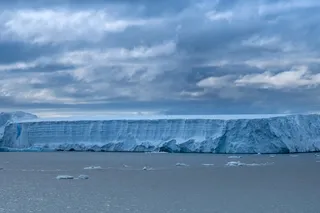When the adaptive acceleration story hit the wires I started wondering if population size wasn't the only parameter that might have changed in the past 10,000 years. To make it short, perhaps a small-world network model is more much accurate now with the rise of complex societies (the complexity being contingent upon the parasitism of elites upon the marginal surplus productivity of the larger population sizes due to agriculture). I assume that in the hunter-gatherer world occurrences such as the burial of a Swiss man at Stonehenge in the British Isles 4,300 years ago were not unheard of; but, I suspect that they became appreciably more common after the rise of mass societies. Talking to a friend about these issues I stumbled upon a geometric analogy in relation to the evolutionary dynamics which I am conceptualizing. Imagine, if you will, a mutation which has a selection coefficient. That selection coefficient ...
The edge of evolutionary dynamics
Explore the adaptive acceleration story: how gene flow and cultural evolution shape complex societies over the last 10,000 years.
More on Discover
Stay Curious
SubscribeTo The Magazine
Save up to 40% off the cover price when you subscribe to Discover magazine.
Subscribe












